Chocolate that really melts on the tongue – there is nothing better. Researchers have now discovered that this can also be done with less fat than most chocolates contain.

Well, who's mouth isn't watering?
Do you like chocolate? Okay, admittedly a stupid question. So rather: Why do you like chocolate? Is it the sweet taste? The feeling of happiness that sets in after the first bite? Or maybe it's the way it slowly melts on the tongue, dissolving and the chocolatey film covering our palate before we swallow it all and reach for the next piece?
As you might notice, I'm a self-confessed chocoholic. For me, chocolate is one of the best things humankind has ever produced – for all three of the above reasons. But researchers from the University of Leeds in the UK have focused on the melt-in-the-mouth mouthfeel for a study published this month in the journal ACS Applied Materials and Interfaces.
The research team led by lead author Siavash Soltanahmedi from the Department of Food Science and Nutrition has discovered exactly what feels so good when we let chocolate melt in our mouth. That wonderful feeling when the melted chocolate fills our entire mouth comes from the way the ingredients in the chocolate mix with our saliva. And the most relevant ingredient for making it melt particularly well is: fat.
That may not come as a surprise, but it's still a shame for the health-conscious among us. But there's also good news: Soltanahmedi and his team say they've found a way to make chocolate healthier without losing its melt-in-the-mouth feeling. Small spoiler: it all depends on where exactly in the chocolate the fat is needed.
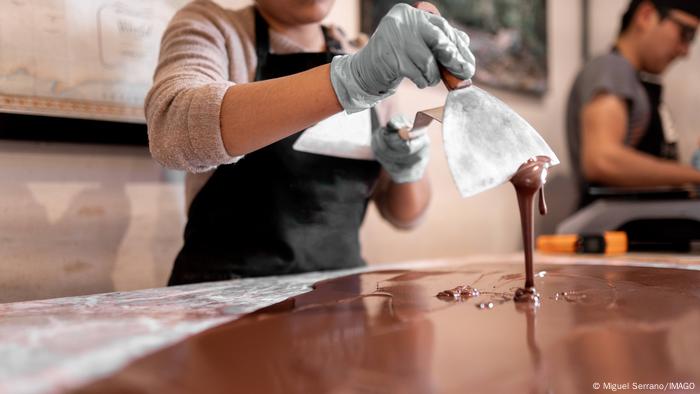
Not only it's the taste that counts – the mouthfeel that liquified chocolate leaves in your mouth is just as important
Fatty cocoa butter provides that good mouthfeel
But first, let's take a look at what chocolate is actually made of. It has solid components, sugar and cocoa mass, and one ingredient that is initially solid and then liquefies in the mouth: cocoa butter, the fat mentioned above. Cocoa butter is solid at low temperatures, but in contact with our tongue and palate it turns into an oily liquid.
“It's what gives us that melt-in-the-mouth feeling we all love “, Soltanahmedi told DW.
In order to find out exactly how this enchanting feeling arises in our mouth, the researchers divided the chocolate-eating process into three stages. First we lick the chocolate while biting it. Then the outer layer of chocolate melts in our mouth, allowing the liquefied cocoa butter to disperse. And finally, all the chocolate components mix with our saliva to create a liquid mixture that we finally swallow with relish.
It all sounds very theoretical – I have to test that in practice.
Chocolate on the artificial tongue
Mmmh. I can confirm that. But back to science: To analyze the sensation in the mouth during these three steps, the researchers used a device that can best be described as an artificial tongue.
“It's a machine with a tongue-like surface,” Soltanahmedi says. “We collected data from human tongues to learn more about the structure of our tongues. Then we averaged the data, made a model from it, and printed it out with a 3D printer.”
The Researchers rubbed dark chocolate onto the artificial tongue. They then rubbed the artificial tongue against another surface, an artificial palate, to analyze what happens to the chocolate and its individual components in our mouth.
People as chocolate testers unsuitable
But why didn't the research team just entrust this important task to real people? I would have loved to hop on a plane to the UK to be part of the experiment as a chocolate tester. And I'm sure there would have been a few other volunteers as well.
“Actually, one of our goals here was to reduce the number of human testers needed in food research because of human nature,” Soltanahmedi says. “You and I can taste the same chocolate and describe it in completely different ways. We're trying to reduce that and instead create laboratory-based data.”
In other words, humans are unfit for reliable and comparable data to produce when it comes to the mouthfeel of chocolate. So that's it with my dream job.
Chocolate – when happiness melts in your mouth
Less fat, same melt-in-the-mouth feeling…
Tests with the artificial tongue showed that the liquefaction that makes chocolate melt so beautifully in our mouths is also possible with a lower fat content than most chocolate currently has .
“Our goal is not to produce the zero-calorie chocolate,” Soltanahmedi says. “I don't think that's possible. But we wanted to reduce the cocoa butter, i.e. the fat content. Our research has shown that it's not the amount of fat that matters, but where exactly the cocoa butter is located.”
The fat should be mostly on the surface of the chocolate, coating the solid particles of the cocoa mass. There can then be less fat inside the chocolate, but more cocoa mass.
“That would be healthier and the chocolate would also have fewer calories,” says Soltanahmedi.
… but not quite as much cute
Less calorie chocolate, hooray! However, the whole thing has a small disadvantage, at least for whole milk lovers like me: the chocolate that is produced in this way would be less sweet. The proportion of cocoa mass is what is stated in large letters on the outside of the packaging (e.g. 70 percent or 85 percent). And as we know, the higher this percentage, the darker and more bitter the chocolate becomes.
This can only be a good thing for anyone who likes dark chocolate. For the rest of us, the old adage “You can't have everything.”
 Chocolate: millennia-old temptation
Chocolate: millennia-old temptation Chocolate: millennia-old temptation
Chocolate: millennia-old temptation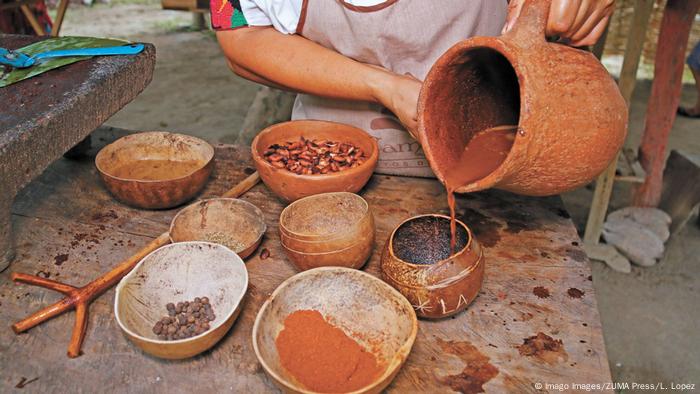 Chocolate: Age-old temptation
Chocolate: Age-old temptation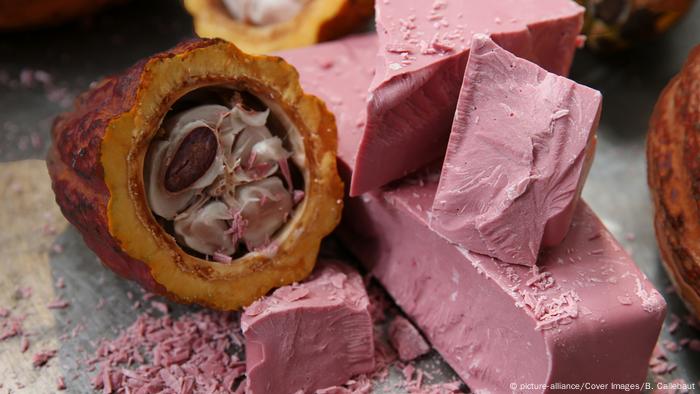 Chocolate: millennia-old temptation
Chocolate: millennia-old temptation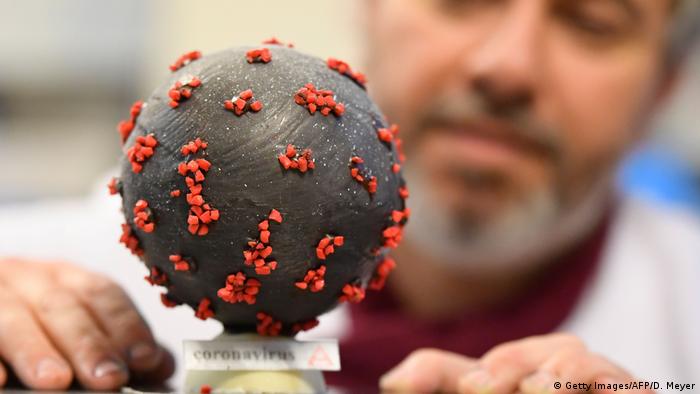 Chocolate: millennia-old temptation
Chocolate: millennia-old temptation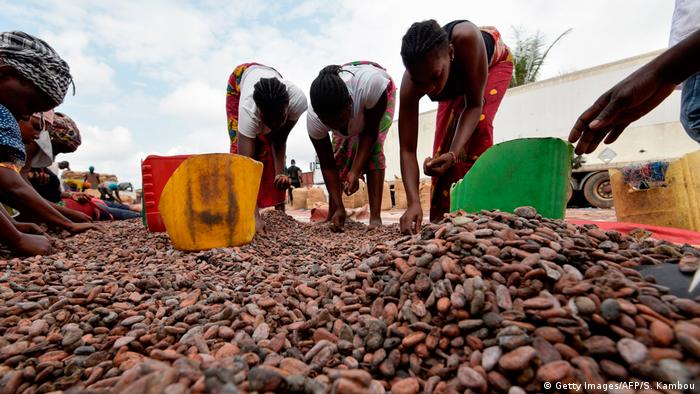 Chocolate: Age-old temptation
Chocolate: Age-old temptation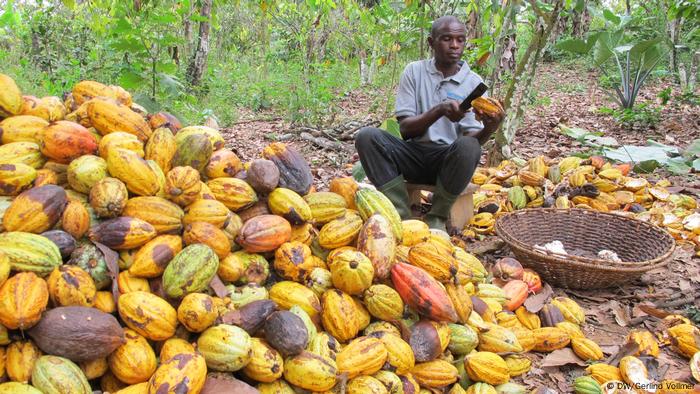 Chocolate: millennia-old temptation
Chocolate: millennia-old temptation